On the afternoon of July 7, the teachers and students first visited the Hong Kong Maritime Museum located at Pier 8 in Central, embarking on a voyage through time and space. The museum’s abundant exhibits and detailed records vividly portrayed the maritime development history of Hong Kong, allowing the students to gain a deep understanding of the city’s close connection with the sea and to profoundly appreciate both the allure of maritime culture and the greatness of the seafaring endeavor.
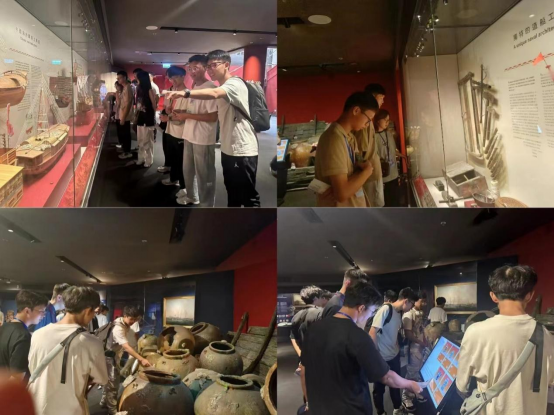
Visit the Hong Kong Maritime Museum
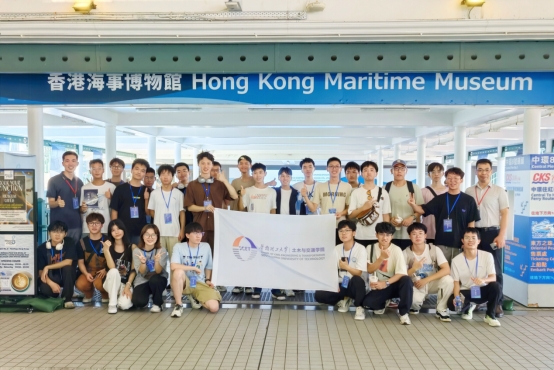
Teachers and students took a group photo at the Hong Kong Maritime Museum
On the morning of July 8, the teachers and students proceeded to Hong Kong Polytechnic University. Through an introduction by Professor Liu Siwei from the Department of Civil Engineering, they learned about the university’s program structure and scholarship opportunities, and received study-related advice from PolyU’s senior Hua Gong students. Subsequently, Professor Wang Jinghua enthusiastically briefed the students on the fundamentals of the hydraulic team and led them on a tour of the hydraulic laboratory. Notably, PolyU’s hydraulic laboratory is one of the best-equipped in Hong Kong and even boasts the city’s largest wave tank, leaving a strong impression on the students.
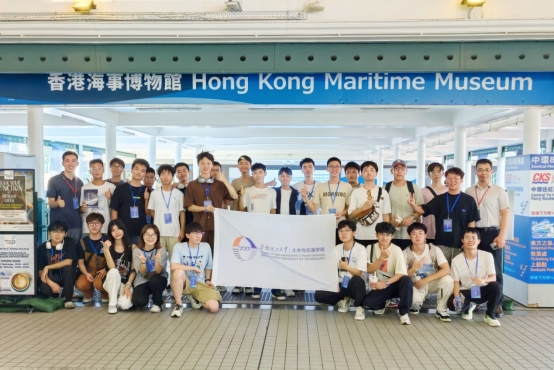
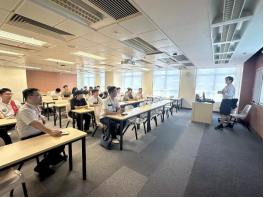
Teachers and students listened to the introduction of the graduate programs and research projects of PolyU
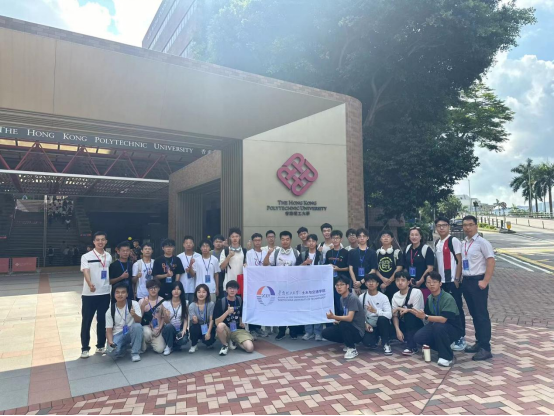
Teachers and students took a group photo at the Hong Kong Polytechnic University
On the afternoon of July 8, Chairman Chen Weisheng of the Hong Kong Maritime Technology Society, along with the teachers and students, visited the Hong Kong Marine Department’s Harbour Traffic Division and the Maritime Rescue Centre VTC located at the Sino Centre in Sheung Wan. Senior Maritime Officer Pan Jiadis provided a detailed introduction to the daily operations of the Hong Kong Vessel Navigation Surveillance Centre and the Maritime Rescue Centre, including the centre’s jurisdiction—which covers specific maritime areas around Hong Kong—continuous monitoring of sea conditions, and the emergency response procedures following alarm activations. Additionally, Assistant Maritime Officer Chen Hanheng explained several key rescue principles, such as prioritizing life above all, responding to rescue needs as swiftly as possible, coordinating rescue resources in a scientific manner, and fully utilizing professional skills and advanced equipment to ensure the utmost protection of life and property at sea. This comprehensive explanation offered the students a profound insight into maritime rescue operations.

The teachers and students took a group photo together at the Maritime Affairs Office
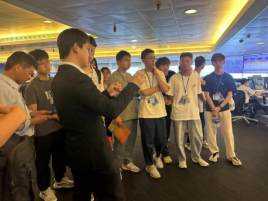
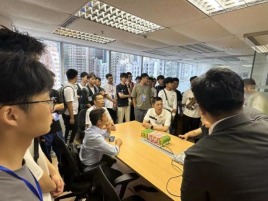
The group of teachers and students visited and interacted with the Maritime Rescue Center (on the left) and the Italian Classification Society (on the right) together
Subsequently, Chairman Chen Weisheng, together with the teachers and students, proceeded to the Italian Classification Society, where Mr. Chen Jinzhou, an inspector at the society, gave a detailed presentation on the structure of RINA. He noted that RINA plays a crucial role not only in the marine field but is also active in several other sectors. Chen also shared insights into the annual inspections of different types of vessels, including the inspection procedures, the issues identified, and the corresponding solutions, thereby deepening the students’ understanding of classification society operations.
On the morning of July 9, the teachers and students visited the Hong Kong Government Dockyards for a tour and a discussion session. During the meeting, Chairman Chen Weisheng of the Hong Kong Maritime Technology Society, along with the dockyard staff, enthusiastically introduced the relevant aspects of the society and explained in detail the precautions for the subsequent tour of the dockyards. After the session, under the guidance of Chairman Chen and the staff, the group entered a simulated ship cabin to experience firsthand the operations of both a cargo ship and a coast guard vessel. Later, with the staff’s lead, they explored several work areas in the dockyards, gaining substantial insights and a deeper understanding of dockyard operations.
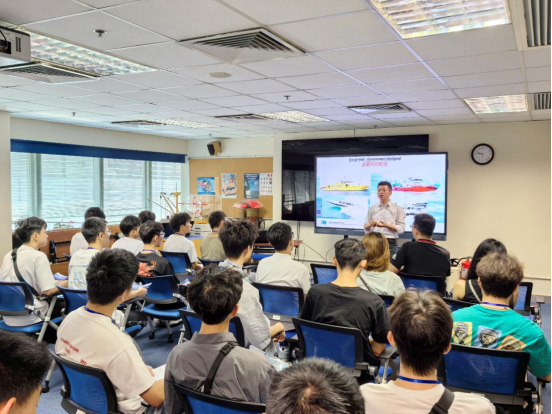
Have a discussion and exchange of views at the shipyard of the Hong Kong government
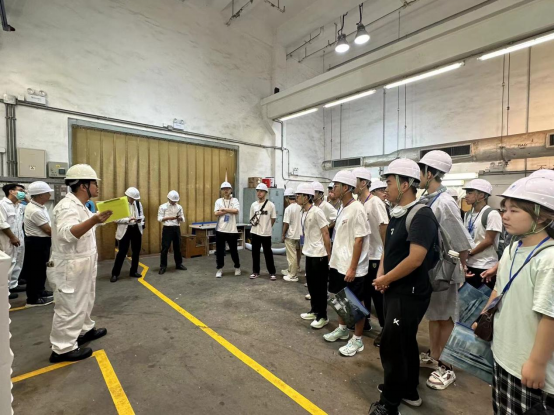
Visiting the Government Dockyard of Hong Kong
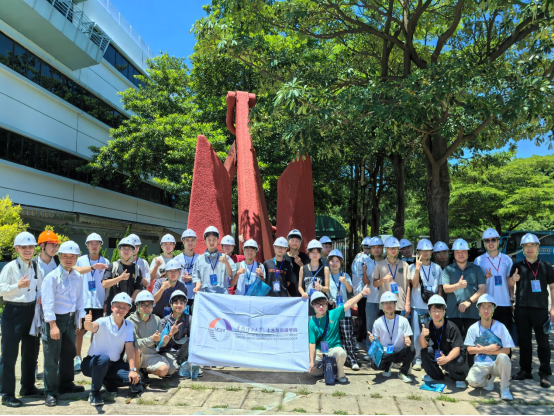
Teachers and students took a group photo together at the Hong Kong government shipyard
In the afternoon, the students and their accompanying teachers headed to Hong Kong Chu Hai College for a visit and exchange. Under the guidance of the college’s faculty, they successively toured the gymnasium, library, VR Lab, and Civil Lab. The gymnasium featured brand-new and fully equipped facilities. The library, abundant with books, offered a beautiful and inviting environment. In the VR Lab, a simulation was used to demonstrate the precautions required at construction sites. In the Civil Lab, a teacher detailed her research findings on air purification, which proved highly beneficial to the students.
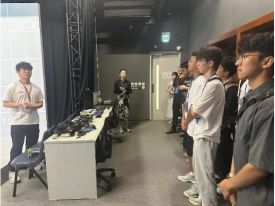
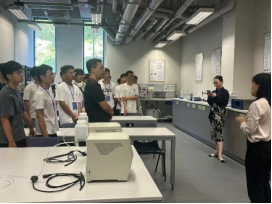
Visit Hong Kong-Zhuhai College
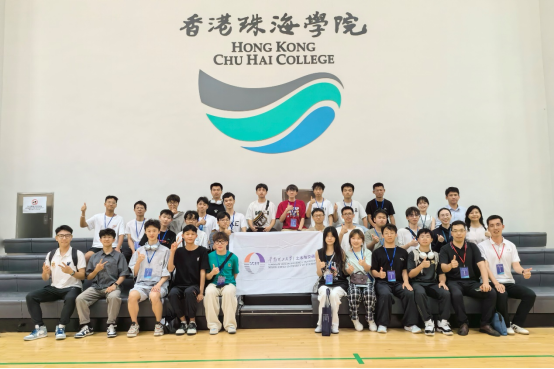
Group photo of teachers and students at the Hong Kong-Zhuhai College
During the three-day experiential internship, the students immersed themselves in Hong Kong’s social and professional environment. Liu Yuhang remarked that the greatest takeaway from the internship was the broadening of everyone’s international perspectives and career planning. Previously, their choices were mostly confined to employment or pursuing graduate studies in mainland China. Now, they have learned about the admission policies of Hong Kong’s universities and the employment conditions in companies such as classification societies, thereby expanding the range of future options. Zhou Tao pointed out that the internship not only revealed the future application scenarios of their professional knowledge but also exposed them to the challenges and opportunities of an international working environment. This experience has both enriched their personal insights and enhanced their intercultural communication skills, marking an important milestone in their academic journey.
This event also marked the first formal overseas exchange of the Naval Architecture and Ocean Engineering program, aiming to allow the students to experience firsthand the academic frontiers of Hong Kong’s higher education institutions and to visit government agencies and enterprises related to the maritime field, thus broadening their perspectives and approaches for future careers. In the next academic year, the college will further expand its in-depth cooperation with maritime disciplines and premium enterprises from Greater Bay Area universities by establishing a regular two-way exchange mechanism, jointly writing a new chapter in the cultivation of talents in Naval Architecture and Ocean Engineering in the Greater Bay Area.
Below are the introductions of the visited academic institutions and enterprises in chronological order:
Hong Kong Maritime Museum:Established in 2003, the Hong Kong Maritime Museum is a specialized institution dedicated to presenting the history of Hong Kong's shipping industry and navigational knowledge.
Hong Kong Polytechnic University:Founded in 1937, this public, applied research university is located in Hung Hom Bay, Kowloon, Hong Kong. In 1994, it was officially designated as Hong Kong Polytechnic University and is one of the statutory public universities funded by the University Grants Committee (UGC).
Harbour Traffic Division and Maritime Rescue Centre VTC:Founded in 1989, this rescue coordination centre is responsible for managing all maritime search and rescue operations within the international waters of the South China Sea in the area bounded by 10°N latitude and 120°E longitude.
Italian Classification Society:The Italian Classification Society (RINA), officially known as Registro Italiano Navale, was established in Genoa in 1861 by a group of shipowners and maritime insurers. With over 150 years of history, it is one of the oldest classification societies in the world and is also one of the founding members of the International Association of Classification Societies (IACS).
Government Dockyards (hk.wangzhanchi.com):Located on Guangdong Road in Tsim Sha Tsui, Kowloon, just south of the former Jordan Road Pier, these dockyards are primarily used for mooring military vessels, ship repair and maintenance, as well as for the manufacturing and assembly of related ship facilities.
The Hong Kong Institute of Marine Technology:With its registered address at PO Box 91645 in Tsim Sha Tsui, Hong Kong, the institute publishes a quarterly newsletter called “Marina” in collaboration with the Hong Kong Joint Branch (HKJ), which is distributed free of charge to its members. The institute also organizes seminars and other related events. It serves as a platform for students and young professionals interested in maritime technology or related fields to become involved; one may join as a student member by downloading, completing, and submitting an application form.
Hong Kong Chu Hai College:Hong Kong Chu Hai College is a recognized post-secondary institution in Hong Kong, authorized to confer bachelor’s degrees and higher qualifications. Originally established as Private Chu Hai University in Guangzhou in 1947—its former campus being located on 2 Mas Road, Chusigang, Dongshan District, Guangzhou, Guangdong Province—the college boasts a long and storied history.

